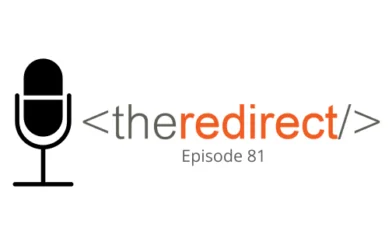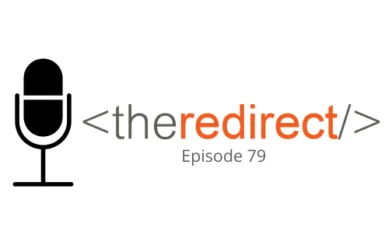Episode 43 / April 20, 2018
Listen now:
Welcome to The Redirect Podcast, where the BlackTruck team shares recent insights and takeaways from the world of search marketing.
In this week’s episode:
- Structured data is one of the most talked about elements for good technical on-site SEO in 2018. It’s one of the more geeky things you’ll try to learn about in search marketing. A primer on what structured data is, how it can impact your site, and why you need to get moving on this (begins at 8:49).
- You recently made some major changes on your site. Have you considered asking Google to re-crawl it? And is this still relevant in 2018? How to “force” a re-crawl of your site (begins at 19:16).
- We’re not ones to get caught up in the rumor mill, but there are rumblings about Google talking to big brands about developing paid how-to videos to come up in featured snippets in SERPs. Is this the future of featured video snippets, or just hearsay? (begins at 1:53).
Let’s Talk Structured Data
What is Structured Data?
In general, structured data is any data that can be organized, or given a structure. Structured data can be, and has been, used on the simple level, such as Open Graph markup for social media tie-ins like Facebook and Twitter. Open Graph (OG) is what is used and modified to tell Facebook and Twitter what to pull in for a title, and sometimes an image and description of your post/page being shared.
Farther along in the structured data discussion, we refer to the languages that search engines support. These are Microdata, JSON-LD, and Microformats.
Bridget Randolph breaks it down over on the Moz Blog:
“There are three syntaxes which search engines will typically support (Microdata, JSON-LD, and microformats) and two common vocabularies which can be used with these syntaxes: Schema.org and Microformats.org. Schema.org can be used with either the Microdata and JSON-LD syntaxes, while the microformats syntax and vocabulary go together.”
In particular, Google has been preferring JSON-LD as their recommended approach.
How can Structured Data Impact Your Site?
The presence of structured data alone will not give you a ranking boost, just like switching to HTTPS doesn’t give you a direct ranking boost. But these improvements all can add up over time and assist search engines with identifying and displaying relevant information from your website.
Benefits of using structured data for SEO purposes:
- Rich cards
- Rich search results
- Knowledge graph
- Breadcrumbs in search
- Carousels
- AMP in rich results
Structured data will play an even more important role now that Google is rolling out mobile-first indexing.
Takeaway: Work with your web developer and SEO team to implement structured data on your site related to your particular industry, location, offerings, and more.
How to “Force” a Recrawl of Your Site Using Search Console
After a site relaunch, we often tell our clients that it may take upwards of 60-120 days for all these changes to be re-indexed in Google; therefore, changes in search analytics may not be fully representational until then.
A best practice that we have been trying to work in to relaunch to-do lists is to tell Google to re-index the site in order to reduce that window of time. It’s not cut and dry; it’s not guaranteed to happen; and you don’t even know that it’s actually been submitted when you do it. (Oh, Search Console!)
This is different than activating your Search Console account for the first time. This is for an instance where maybe you relaunched the whole site or made major changes to an important page.
Submit Page to Index
Visit Search Console > Crawl > Fetch As Google, then drop in your desired link to fetch. From there, you will get a result. At that point, in the result you can click “submit to index,” and you’ll have the option to submit that particular page or “this page and its direct links.”
From there, Search Console will tell you it was submitted, but there’s no insight as to when it will actually get done, or even if it will get done. Google will take a look at many factors in deciding if the indexing is worthwhile and/or justified. There is no confirmation given if and when a re-indexing is done.
Submit a New Sitemap
Another option for forcing a re-crawl is to submit a fresh sitemap to Google. This can easily be done through Search Console, and once again is a signal to Google that things have changed and you’re attempting to let Google know that you’re trying to organize it for them. Google likes sitemaps, and they are a key indicator in part of ranking factor theories. A best practice may be annually, or every other year, re-submitting sitemaps if you have a site that changes often.
Read more from Search Engine Watch.
Takeaway: Have a plan for helping those spiders crawl and index your site annually, or after making major changes to your site.
Paid How-To Videos for Featured Snippets?
Ashley kicked off this week’s podcast with a little industry hearsay. We often discuss the value of creating “how-to” content, as it will help solve the problems searchers are looking for help with when they do a search. This type of information can often capture Google’s coveted “featured snippets,” a topic we also discuss quite often.
The snippets landscape has been changing, and there’s been much talk lately about how and when this space might become monetized.
Enter a recent rumor shared on CNBC, which Search Engine Roundtable tipped us off to today. We mentioned in a recent podcast how we’ve stumbled upon videos showing up in Google’s featured snippets, set to begin playing at the exact spot in the video where the topic of a query is being discussed. Apparently on the heels of this update, Google is now pitching advertisers to create content and videos to be used as “voice responses for Google Assistant and Google Home queries.”
According to the CNBC report:
“Google has been pitching companies to create videos for a new ‘How To’ feature for its smart assistant. It plans to show the feature at its annual conference for software developers in May, according to a person who’s seen the pitch.”

Takeaway: This rumor points to a potential opportunity coming down the pipeline for video strategy. But most importantly, don’t stop creating helpful content just because big brands could potentially beat you out.




